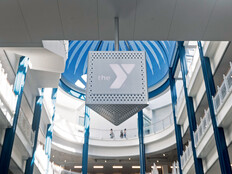Barcode Scanning: Asset Management Made Easy
When a customer in Pittsburgh requests a specific type of equipment, Sportvision’s Tim Driedger can locate an available item in Dallas and forward it with a click of a mouse. Barcode scanning makes it possible.
The technology once seemed impractical for organizations the size of Driedger’s company, a Chicago-based provider of broadcast enhancements for collegiate and professional sports ranging from football to NASCAR. But that’s no longer the case.
Today’s barcoding solutions — from manufacturers such as Wasp Barcode Technologies, Motorola and Zebra Technologies — are a cost-effective and user-friendly means of tracking documents, assets or inventories. “SMBs and SMEs [small and medium enterprises] are definitely the future of barcode scanning,” asserts Michael Liard, a practice director for ABI Research. He says all-inclusive solutions deliver a very high return on investment “due to accuracy and time savings.”
Sportvision’s experience is a case in point. Best known for inventing the “yellow line” used during televised football games, Sportvision constantly moves racks of broadcast-related technology around the country to cover various sporting events.
At the beginning of a sport’s season, Sportvision ships out equipment and may not see it again until the end of the season, explains Driedger, its information systems engineer. “Before barcoding, we had no idea whether an existing asset was available to move to another event. Inevitably, this led to duplicate equipment purchases.”
Then Sportvision morphed the shell game into a revenue stream by adopting a complete mobile barcode solution from Wasp.
“Now, we can locate any item, anytime,” Driedger says. “Plus, we know which items can be most efficiently transported between given locations.” Capital costs also have plummeted because duplicate purchasing has been eliminated.
Another benefit is comprehensive asset management. “Before, we only tracked assets that met the $1,000 threshold required by our accounting department,” Driedger says. “Due to automating, we now track all relevant assets regardless of what they cost.”
The Wasp solution tags and designates equipment racks as “parents,” and associate gear as “children.” Updates to the parent automatically flow through all children. “Using Wasp’s unique parent/child capability, we only concern ourselves with the top-level asset,” Driedger says. “This is more efficient than managing assets individually.”
Scanner portability is another critical feature. “Wired scanners cost less but would require our technicians to forklift pallets over to their workstations for scanning,” Driedger explains. “With portables, techs carry their scanners to the assets instead.”
Since first deploying Wasp’s barcode technology in 2008, Sportvision has upgraded to the enterprise version. Ultimately, this will permit the IT team to associate service records with the hundreds of assets Sportvision tracks, further streamlining maintenance chores and reducing operating costs.
At this point, Driedger says, barcode scanning is an integral component of Sportvision’s operations. “It’s definitely made our technicians’ jobs easier,” he says. “Overall, we’re very pleased with the system and its positive benefits on our profitability.”
All-in-One Solution
New York City’s Legal Aid Society, a nonprofit advocate for legal reform and provider of legal services to the poor, also uses Wasp’s wireless barcode scanners and enterprise software to achieve business goals. Five IT technicians manage thousands of computing and forensic assets — ranging from desktop setups to projectors, cameras and audio gear — that are spread across 35 offices in the city’s five boroughs.
Prior to barcoding, tracking assets was a historical exercise. “Taking inventory and inputting data took so long that information was obsolete by the time it was entered,” says Jose Negron, lead support specialist for Legal Aid. That all changed when the organization adopted Wasp barcoding technology in 2007.
Today, the time required to inventory assets has been reduced by about 90 percent, and significantly less travel to satellite
locations is needed to manage equipment. Provisioning employee workspaces also occurs more quickly and accurately.
Barcoding also helps Legal Aid collect detailed asset information and produce data-rich customized reports. This additional functionality, in turn, helps reduce capital and operating costs. “Being so proactive with long-range planning and budgeting is a huge benefit to us.”
International Inventory
In a warehouse containing approximately 300 unique items, it takes only a dozen Shurhold Industries employees to accurately select thousands of parts each week, thanks to Motorola MC55 Enterprise Digital Assistant mobile devices that scan tags printed with Zebra Technologies label printers.
![]()
Does your company have any plans to evaluate or implement barcode scanning devices to better manage its assets?
21% We have already implemented the technology.
64% We have no plans to implement the technology.
11% We are researching and evaluating available options.
4% We are currently implementing the technology.
SOURCE: CDW poll of 356 BizTech readers
“We couldn’t live without our asset tracking system,” says Barry Berhoff, Shurhold’s owner and president. “Before, we had an error in some function of the building at least 40 percent of the time. Now, it’s less than 1 percent.”
Although Shurhold Industries is a small business by definition, Berhoff has grown the organization into an international manufacturer and supplier of cleaning equipment for marine and RV vehicles and automobiles. He credits barcoding, first adopted in 2004, as a contributor to this success.
Today, Shurhold tracks far more than parts using the technology. Even locations within the company’s 12,000-square-foot facility are tagged. “With the Motorola devices guiding employees through the building, our existing staff is very efficient,” Berhoff explains. “We can [get] a new employee [up and running] within an hour, which is especially helpful for temporary staffing during busy periods.”
The technology has delivered other benefits as well. The company’s annual inventorying process, which used to take a full week, “is down to a day,” Berhoff reports. Plus, it “would be off by 10 to 12 percent. Now, it’s [off by] less than a half percent,” he says.
“Having more accurate inventory has affected the accuracy of everything else,” Berhoff continues. Morale is higher, too, he says, “because people don’t like making mistakes. As a result, our profitability has definitely improved.”








